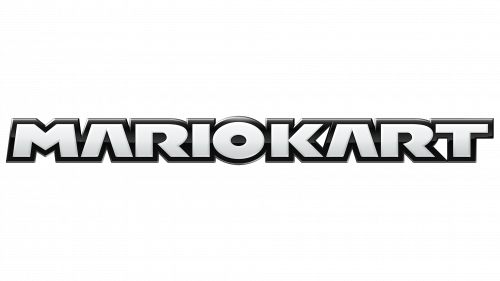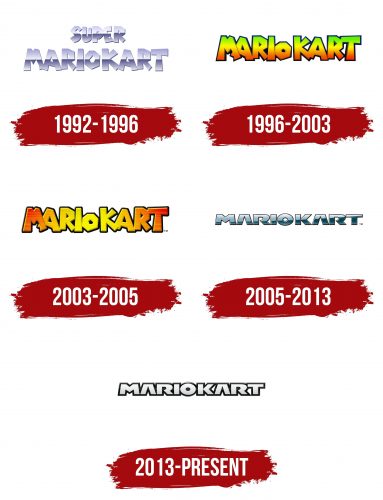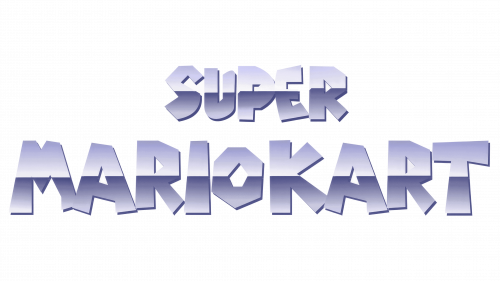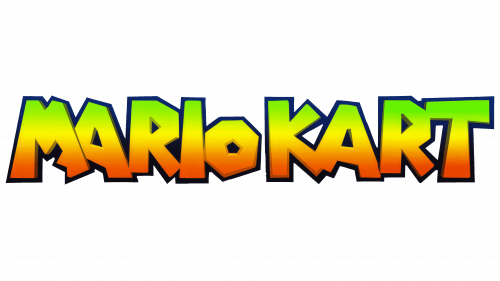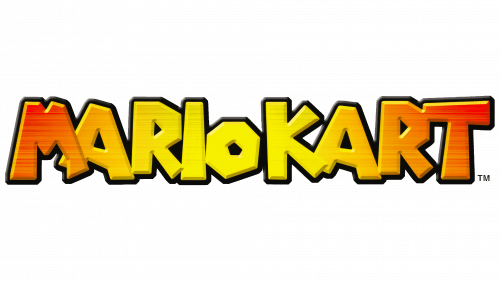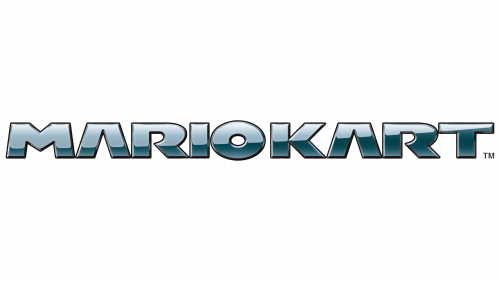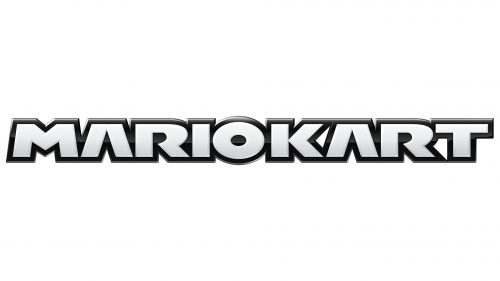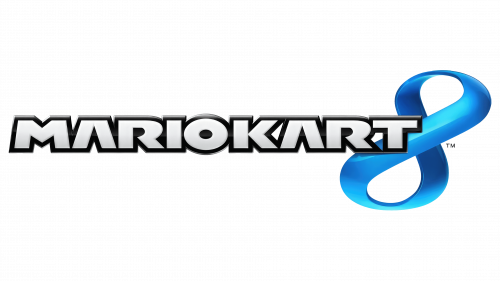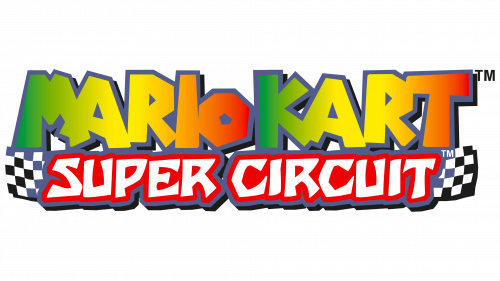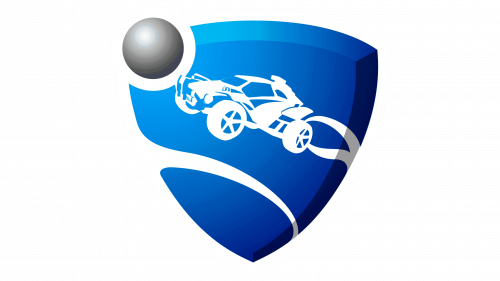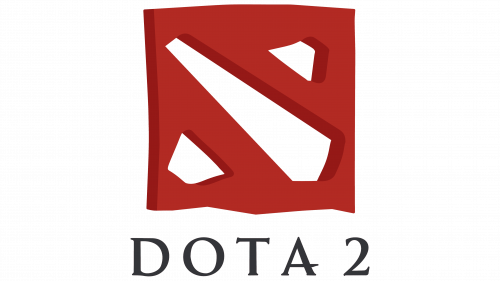The Mario Kart logo emphasizes the atmosphere of arcade racing, where gamers compete on various tracks with their favorite Nintendo characters. The visual elements symbolize the dynamic and fun spirit of the game. Bright colors convey the energy of the gameplay, reflecting the joy of competition in exciting races.
Mario Kart: Brand overview
It’s hard to imagine a time when characters from popular video games didn’t try to outpace each other on colorful tracks. The Super Mario heroes were the first to get behind the wheel of cars, thus giving birth to a new racing genre. The first 16-bit installment of the Mario Kart series was released in 1992 on the SNES console, and four years later, its sequel appeared – this time with elements of 3D graphics. Each subsequent game differed from the previous ones, with additional modes, power-up items, tracks, cars, and drivers. In 2014, Mario Kart 8 was released in HD format, where gamers, defying the laws of physics, could ride on walls and ceilings. In 2020, in honor of the 35th anniversary of the original franchise about the Italian plumber, the Home Circuit race with mixed reality was published.
Launched in 1992, Super Mario Kart revolutionized gaming by combining racing with the Super Mario universe’s adventure and characters, introducing a novel gaming experience on the Super Nintendo Entertainment System (SNES). More than just a game, Super Mario Kart became a foundational phenomenon, pioneering multiplayer modes that turned gaming into a social event, sparking competition and joy among friends and families.
As Nintendo’s consoles evolved, so did the Mario Kart series. It ventured into 3D with Mario Kart 64, enriching the franchise with new characters and expanded tracks. Subsequent releases like Mario Kart: Super Circuit, Mario Kart: Double Dash!!, and Mario Kart DS continually pushed the boundaries of racing gameplay, integrating innovative mechanics that kept the series fresh and exciting.
2008’s Mario Kart Wii marked a pivotal moment, introducing motion-controlled steering that widened the game’s appeal, evidenced by over 37 million global sales. This success story continued with Mario Kart 7, Mario Kart 8, and the critically acclaimed Mario Kart 8 Deluxe on the Nintendo Switch, further enhancing the series with new gameplay modes, customization, and online features.
Expanding its reach, the Mario Kart series entered the mobile gaming arena with the Mario Kart Tour in 2019, making the beloved racing experience accessible to an even broader audience. This move underscored Nintendo’s dedication to growing the franchise while maintaining the cherished elements that have endeared it to fans worldwide.
Decades since its inception, the Mario Kart series has cemented itself as a pillar of video gaming culture, cherished for its entertaining gameplay, colorful characters, and compelling multiplayer modes. With over 150 million units sold across the globe, Mario Kart not only stands as one of the top-selling game franchises but also a shining example of Nintendo’s legacy of creativity and fun.
Meaning and History
When the debut Mario Kart game with 16-bit graphics was released, its logo looked quite simple, although designers used a trendy gradient even then. As the series expanded, the emblems evolved, particularly reflected in the font, as the basis of all word marks was the brand name. At some point, there was a transition from an informal cartoonish style to strict futurism. This may be related to the maturation of the target audience, as more than two decades have passed since the first part’s release. Moreover, the strict geometric letters are more associated with modern technologies than the colorful “jumping” inscriptions. Progress had to be shown, considering the developers’ pursuit of innovations such as stereoscopic 3D graphics and mixed reality.
What is Mario Kart?
Mario Kart is a series of kart racing games associated with the Super Mario franchise. The first was released in 1992, and the fifteenth in 2020. Despite the noticeable difference in modes, tracks, and other elements, all parts share common gameplay. Users control a character who is behind the wheel of a car, trying to overtake other drivers and collecting various power-ups along the way. The developer and publisher of the video games is the Japanese company Nintendo.
1992 – 1996
In 1992, Nintendo released the game Super Mario Kart, in which characters from the popular franchise found themselves behind the wheel of racing cars for the first time. Its name became the basis for the logo: the initial word took the top line, while the second and third occupied the bottom. However, there is no wide interval between “MARIO” and “KART,” causing them to merge. The inscription is centered and designed in an unconventional style: all letters are uppercase, uneven, with many angles, even at “O.” The emblem is colored in a silver-gray gradient. A horizontal line runs through the center of each glyph, dividing them into two parts: dark and light.
1996 – 2003
For Mario Kart 64, designers refined the logo, adding bold black shadows to the letters to make them appear three-dimensional. This is related to adding 3D elements to the game, making the racing track more impressive. The inscription itself became colorful: the gradient now starts with green (at the top), smoothly transitions to yellow (in the middle), and then to orange and red (at the bottom). This “upside-down traffic light” matches the playful style of the font, which still lacks symmetry: glyphs merge, lean in different directions, and have uneven thickness. Despite the childish style, the word mark looks massive due to its high boldness and numerous angles.
2003 – 2005
The updated logo retained its shape but lost the green color. The gradient type also changed: the center of the inscription is now brightly yellow, with the palette gradually transitioning to red on the right and left. The already narrow space between the words was reduced so much that there is almost no gap between the last “O” and the first “K.” This logo was officially discontinued after the release of Mario Kart Wii in 2008. However, it could still be seen at the finish line in some games.
2005 – 2013
In 2005, a new wordmark was introduced, differing from all previous ones with its strict geometric shape. It uses a futuristic font with straight and symmetrical letters. The most notable are the uppercase “A” s without horizontal strokes. Glyphs touch but do not merge as before. The color became silver-gray with a green tint. The emblem appears shiny due to the uneven gradient divided diagonally into light and dark parts. This version appeared in the Mario Kart DS game.
2013 – today
Since 2013, the logo with a light-gray “MARIO KART” inscription has been used. There is no hint of a separating interval between the two words. As a result, the letter “O” is in the spotlight, as it is exactly in the middle and the only one with a round shape. The two “A” s without crossbars continue to make the emblem futuristic. Glyphs are outlined with black bands with a barely noticeable gradient, creating a three-dimensional effect.
Font and Colors
Over the years, the Mario Kart logo has greatly changed, showing how the game’s style and identity have grown. At first, the logo’s font was fun and quirky, much like the fonts used in the Super Mario series. It fits well with the game’s playful and adventurous vibe. But in 2005 and again in 2013, the logo got a sleeker, more polished look. The developers made a new font for these changes, using a bold, geometric style. This new font had a unique feature: the letter “A” doesn’t have a crossbar, which makes the text stand out and look modern.
The logo uses DF Gothic for its big, bold capital letters. This font is known for its clean lines and strong shapes, adding to the logo’s powerful impact and highlighting the game’s excitement and competitive spirit.
The logo’s colors have also evolved. The early logos were full of bright, fun colors that fit the game’s lively world and races. However, after 2013, the colors changed to black, white, and light gray, making the look simpler and more modern. This wasn’t by chance; the designers wanted the game to feel up-to-date and appealing for today’s players.
These careful choices in font and color show how Mario Kart has matured as a series. By updating its look, Mario Kart has stayed popular and relevant, mixing its long history with a modern style that gamers love.
FAQ
What is Mario’s signature kart?
Mario’s “Standard Kart” is a classic in the Mario Kart series. It’s known for being well-balanced, offering a solid racing experience without leaning too heavily on speed, acceleration, or handling. This kart stands out with its design that nods to real-life go-karts and features Mario’s iconic red and blue colors, echoing his famous plumber outfit.
Alongside the Standard Kart, Mario also races in the “B Dasher,” which first appeared in Mario Kart DS. This kart is about speed and style, drawing inspiration from Formula One race cars. It’s a hit with players who are after a kart that not only moves fast but also looks the part, highlighting Mario’s role as the franchise’s main character.
Racing as Mario, whether in the balanced Standard Kart or the speedy B Dasher, brings a sense of adventure and heroism. It taps into the series’ nostalgia while adding excitement to the gameplay, showing why Mario continues to be a fan favorite in Mario Kart and the wider gaming world.
What was Mario Kart original name?
Mario Kart, known as “Super Mario Kart” when it first hit the scene in 1992, quickly became a key part of Nintendo’s game lineup. It debuted on the Super Nintendo Entertainment System (SNES) and was the first of its kind, blending the world of Mario with racing. This game introduced players to racing in the Mushroom Kingdom, using characters from the Mario universe, with unique kart mechanics and creative tracks that included elements from Mario’s platform games.
The name “Super Mario Kart” was perfect for the game, linking it to the Super Mario series and introducing the idea of kart racing to Mario fans. The “Super” in the title reflected the game’s release on the SNES, indicating a bigger and better gameplay experience. By mixing Mario’s world with racing, Super Mario Kart offered a new type of game that was fun for everyone, laying the foundation for a series that would grow in popularity and continue to charm players worldwide.
What is the slogan of Super Mario Bros?
Mario Kart started as “Super Mario Kart” 1992 on the Super Nintendo Entertainment System (SNES) and quickly became a staple of Nintendo’s games. It was the first in a long line of games that brought together the fun of Mario’s world with exciting racing. This game was special because it mixed familiar Mario characters with kart racing, introducing a new type of game. Players loved racing as their favorite characters, like Mario, Luigi, and Princess Peach, on creative tracks filled with power-ups that made the races even more exciting.
The name “Super Mario Kart” perfectly captured what the game was about: a new racing adventure with the Super Mario touch. It offered a new way to enjoy the Mario universe, blending racing with the charm of Mario and his friends.
Mario Kart has always been about the thrill of the race and the idea that anyone can win. With each version of the game, players are reminded that with a little skill and luck, they can overcome any challenge, from dodging shells on Rainbow Road to mastering Bowser’s Castle. This message of hope and the joy of playing has kept Mario Kart beloved by fans all these years.
What is the slogan of Mario Kart?
Mario Kart is known for its excitement and competitive fun but doesn’t stick to one slogan for all its games. Each game in the series has catchphrases like “Let’s go!” or “Time to race!” to showcase what’s new and exciting about that installment. These phrases capture the spirit of adventure and the thrill of racing in the Mario Kart world.
Promotions for Mario Kart focus on the excitement of racing against friends, the fun of using items to change the game, and the unpredictable nature of each race. Even without a single slogan, the themes of friendship, competition, and surprise play a big part in what makes Mario Kart so enjoyable. These aspects, beloved characters, and creative tracks have made Mario Kart a favorite for multiplayer gaming fun.
